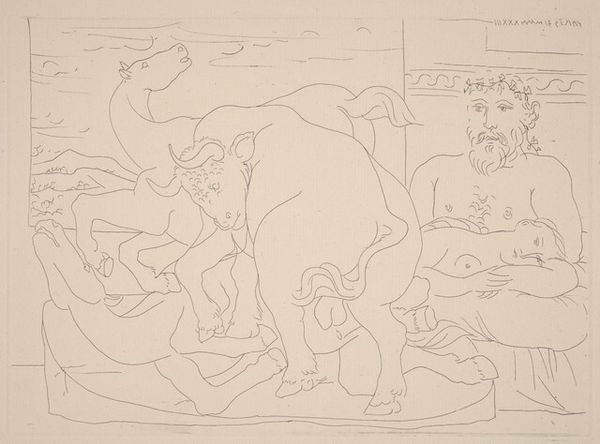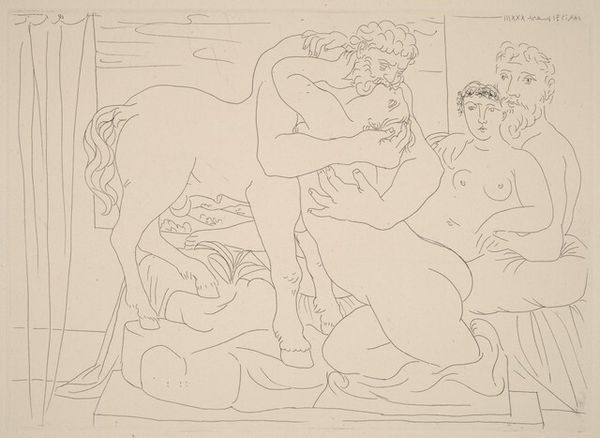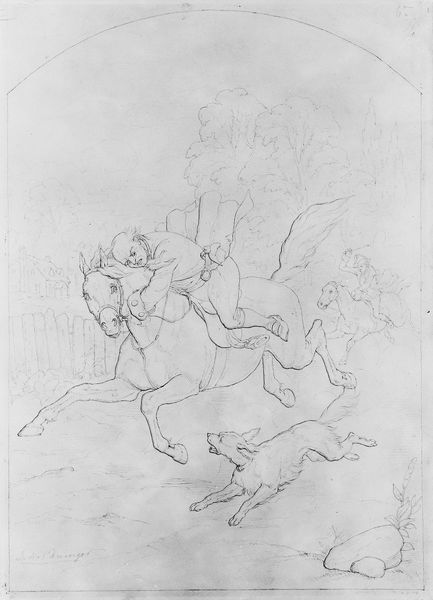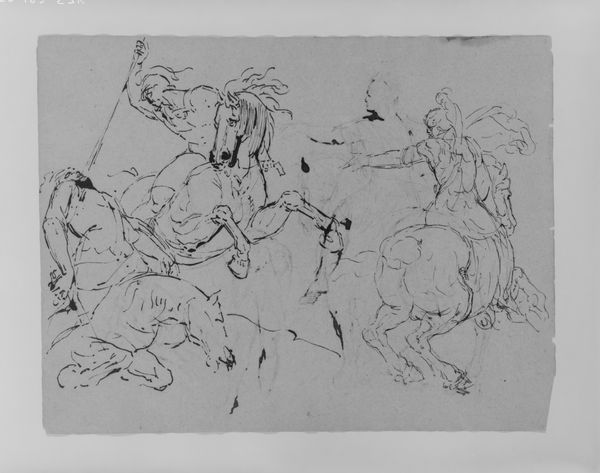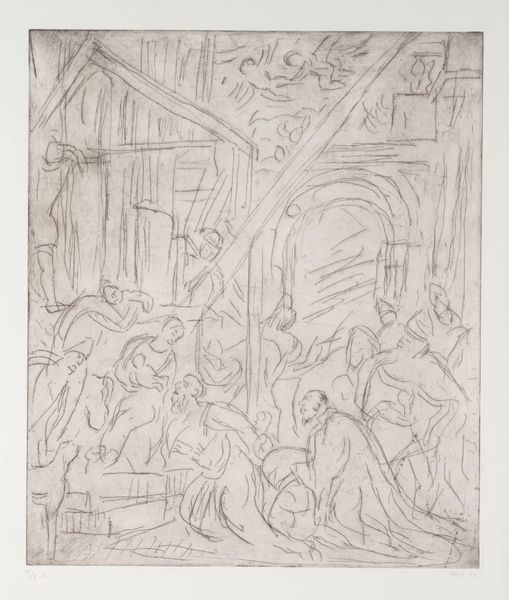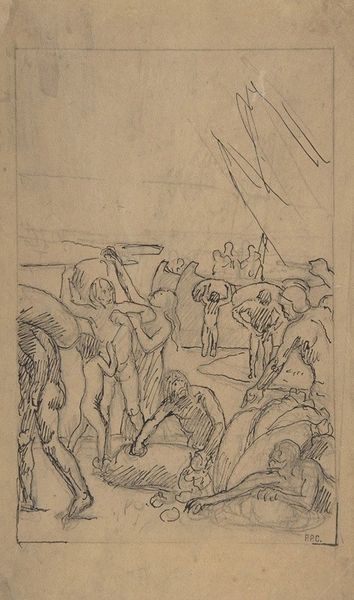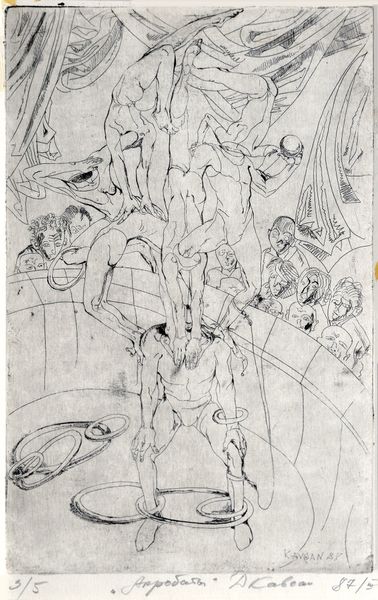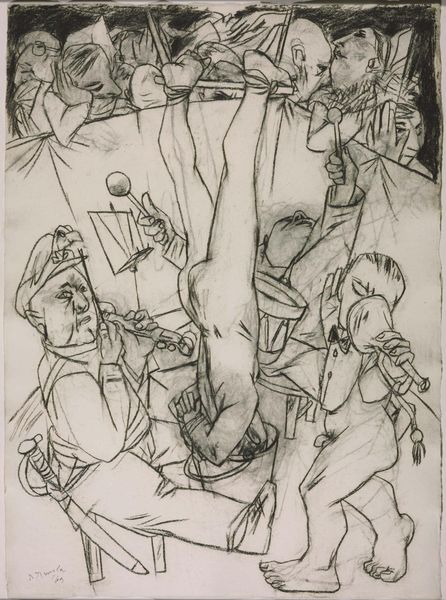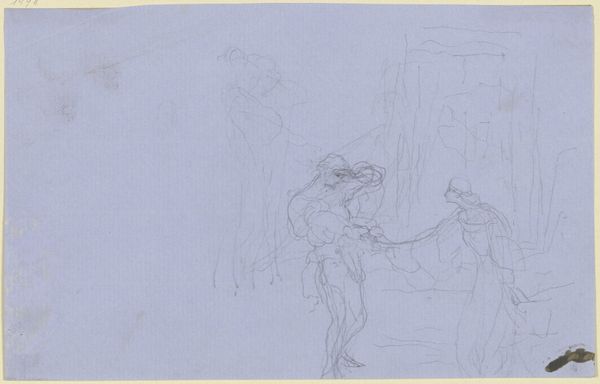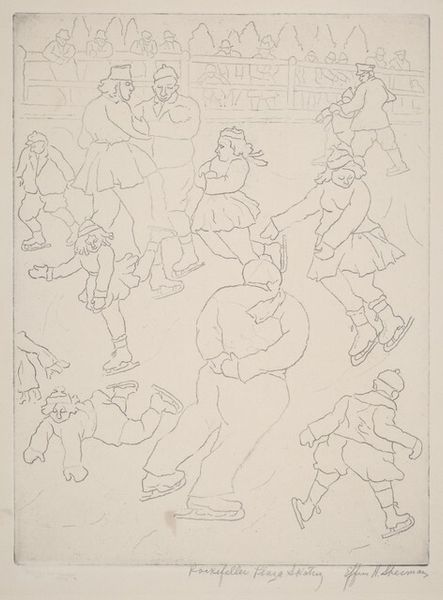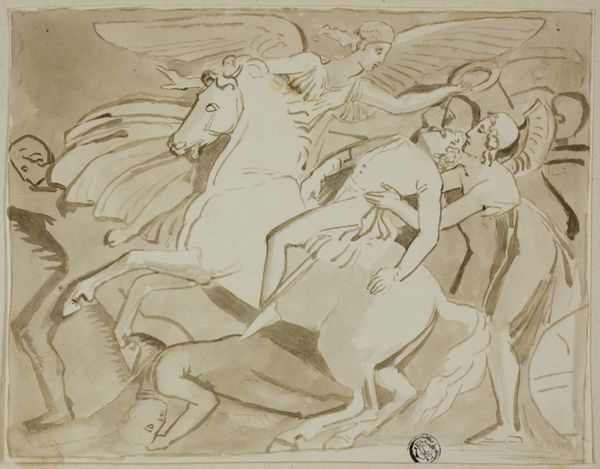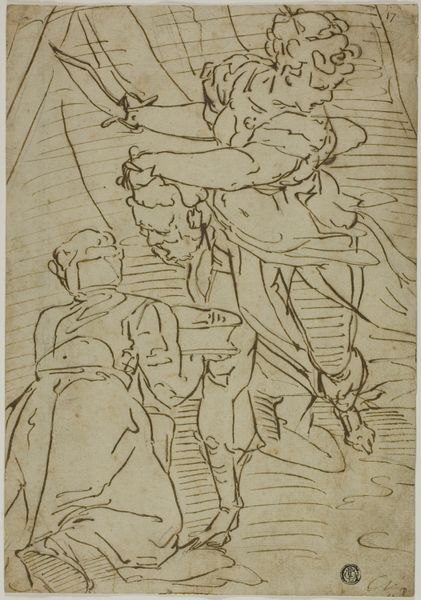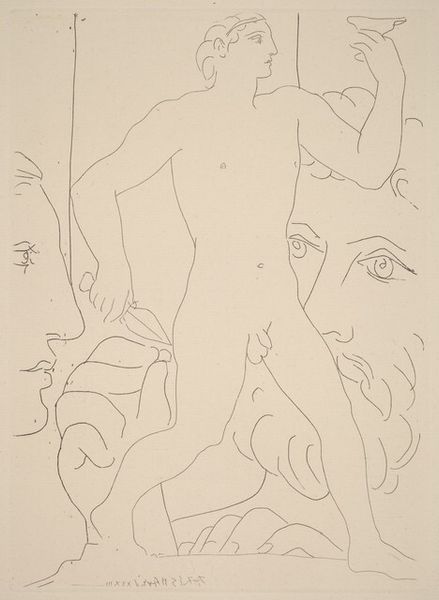
drawing, print
#
drawing
# print
#
figuration
#
line
#
cityscape
Dimensions: image: 298 x 225 mm sheet: 404 x 290 mm
Copyright: National Gallery of Art: CC0 1.0
Curator: Alright, let's talk about this piece titled "Carousel Central Park," a print by Effim H. Sherman, dating roughly from 1935 to 1943. What strikes you first? Editor: A peculiar emptiness. It's like the ghost of a joyful scene, the sketched lines implying motion, yet somehow frozen. A hesitant dance on the verge of chaos. Curator: Precisely! Sherman's use of line is very evocative here. There's a sense of fragility to it. It doesn't quite delineate every form; rather it suggests it, leaving something to the imagination. Look at how the faces are merely outlined! Editor: Yes, that linear style emphasizes the mechanical repetition inherent in a carousel, right? The same circular path, the same fixed smiles on the wooden horses. Curator: It also reflects, I think, the disquiet many artists felt during that time. The country was clawing its way out of the Depression, and another world war was brewing. There is something subdued despite the obvious theme of childlike play and joyful ride! Editor: You can certainly read that unease in the sketched hands below—they look almost like they’re reaching out for something just beyond reach. What I find particularly clever is the lack of color. It focuses you on form, rhythm, the bones of the scene. The linear scaffolding, so to speak, is the real subject. Curator: Definitely! And the use of print as medium! So repeatable! Just like life’s routines, you could say. Editor: This work encapsulates, for me, the tension between reality and its representation, joy and the void beneath, form and formlessness. What do you take away from it all? Curator: Well, for me it is a reminder that even the most cheerful facades can mask complex, profound anxieties. It's a beautiful testament to the power of suggestion.
Comments
No comments
Be the first to comment and join the conversation on the ultimate creative platform.
